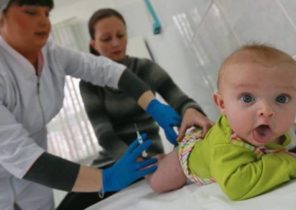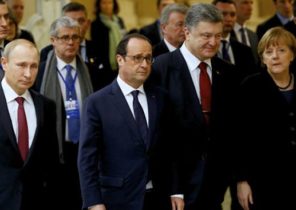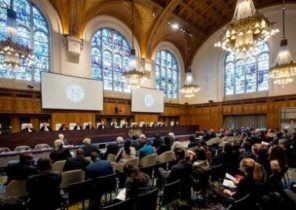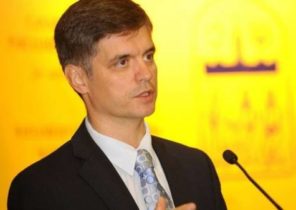
It was Friday, the 13th day of six in the evening, and in the Park opposite the St. Petersburg Church of St. Isaac of about a thousand protesters wrapped in a coat. The wind was blowing, and the doors of the temple behind them gloomily watched the three men in Cossack uniforms. So last week held a hastily organized protest against the decision of the Petersburg Governor Georgy Poltavchenko to pass St. Isaac’s Cathedral Russian Orthodox Church.
The Cathedral, which is the second largest, after Moscow’s Cathedral of Christ the Savior Orthodox Church construction, up until last week belonged to the state. Since the days of the Soviet Union, there was located the Museum, although in the temple daily worship services were held.
Current disputes and protests vaguely resemble this kind of discussion in the Czech Republic about who owns St. Vitus Cathedral.
Believers against the Church
However, in Russia, the protests do not pushed the Patriotic tendencies of the late 19th century, and the modern event.
Over the past 25 years, the Russian Orthodox Church has come a long way from Renaissance after the collapse of the Soviet Union up to the present the merger with the open government.
In contrast, the Czech Catholics, who believe the Cathedral of St. Vitus anyway, his, many Russian believers are concerned, where the Russian Orthodox Church. Many of them came to the demonstration against the transfer of St. Isaac’s Cathedral.
“People came there to protest not against faith, but against the joint stock company called the Russian Orthodox Church. Opposed to us just said that the decision was made. In the same spirit of these fine people will restore serfdom, and we can move on to warn,” says the opposition journalist Diana Kachalova, who took part in the protest action.
“In 90-e years we have actively participated in the revival of the Church. Every weekend I went to help build a Church. We read a lot of books, arguing,” — says Alexey Durov (he recently turned 50) about why he came to the Cathedral of St. Isaac.
“However, over time, it deadened. Our priest was sent to another place, and new is concerned we do not, and local businessmen who gave him money for the completion of the temple, and he is sanctified a Mercedes. It was exactly the same in other places, and lately it’s getting worse,” adds the actor.
The resurrection of the Church
The Russian Orthodox Church as one of the bulwarks of tsarism, the Bolsheviks considered the internal enemy and the nest of the counterrevolution. Up to 1939 were the official policy of destroying Orthodox churches and the eradication of faith as such.
Many priests and almost all the higher clergy were either killed or sent to camps. In great measure, the salvation of the Church contributed to the beginning of the Second world war, when Stalin suddenly needed the help of priests. In 1943, the Kremlin even allowed to choose the Patriarch.
The number of churches gradually increased after the war because the Kremlin was left in force those churches in which services in the occupied territories resumed the Nazis.
The next wave of repression swept under Khrushchev in the years 1959-1961. According to estimates, over these two years it destroyed more temples than before the war.
When, in 1987, perestroika began in the Soviet Union there were only 6893 Orthodox Church.
The gradual collapse of the Soviet Union revived the people’s interest in religion. Published dozens of books, the clergy appeared on television, revived dilapidated temples and built new ones.
“It was a natural process. The state helped, say, in returning the buildings, but did not seek to involve the Church in the creation of some new ideology,” recalls the 90 years, columnist and political analyst Alexander Morozov, who at the time worked in the journal of the Moscow Patriarchate.
A new king and a new court
According to Morozov, that all changed approximately in 2009, under the new Patriarch Kirill, who then was replaced by his predecessor Alexy II.
“Cyril too loves the power, likes to feel important, so they are drawn to the state”, — said Alexander Morozov.
Under the new Patriarch began to form a new ideology. “First of all, among representatives of power structures popular kind of pseudomonarchia in which Vladimir Putin is perceived as the king, and they consider themselves the new official aristocracy with all its privileges,” wrote journalist Andrei Soldatov and Irina Borogan in the book “the New aristocracy: the restoration of a police state,” published six years ago.
Sometimes the manifestation of a new ideology very eclectic. “I recently visited one FSB officer, and he’s in the office, in addition to the President’s portrait, still hangs in the icon and a portrait of the founder of the Cheka, Felix Dzerzhinsky, and on the opposite side — the image of the last Tsar Nicholas II” — is perplexed one Czech entrepreneur, who asked not to publish his name.
The Governor of St. Petersburg Georgy Poltavchenko, who now gave the order to transfer to St. Isaac’s Church, the Russian Orthodox Church, refers to senior representatives of the so-called conservative Orthodox wing in the Kremlin.
Since 1979 he worked in the KGB, then in Leningrad, where he met the future President Putin. Today, however, Poltavchenko, first of all, boasts seven medals from the Russian Orthodox Church. In addition, for many years he visits the “monastic Republic” on the Greek island of Athos.
And yet laconic Governor did not win the hearts of Petersburgers. “He seems to be very cold person and goes towards big business. I would say that the protest against the transfer of St. Isaac’s Cathedral the Church is associated, primarily, with the rejection of the Governor”, — explains Alexander Morozov.
Recently Poltavchenko prefer not to go to football matches “Zenith” in St.-Petersburg after a few years ago, almost the entire stadium booed him.
On the sidelines rumor has it that this year he will leave the Governor’s chair, so that the transfer of the temple Church — a kind of parting gift.
Protests against change of ownership of Peterburgskaya Cathedral, most likely, will not last long, especially as the climatic conditions of St. Petersburg winters are not conducive to street demonstrations. Disputes about the modern Orthodox Church no doubt will continue.
Rich or poor Church
“The behavior of the Patriarchate, he stressed the importance of the Church, is contrary to the traditions of Russian Orthodoxy. It was largely monastic, folk and poor, and such were and preach the values.
So people are extremely sensitive to any insolvency claims of Patriarchy. They thought that the place of clergy in working with the poor, in prisons and other things. Yes, it is, but most people notice the watch of the Patriarch for several million rubles, than the fine work of some priest,” — explains Alexander Morozov.
This discussion reminds me of one of the most important disputes the Russian Orthodox Church between the so-called non-possessors and Josephites at the end of the XV century. If to simplify, this debate was about whether monasteries to be property or not.
The first (non-possessors) argued that the management and ownership of the peasants throws the Church unnecessary temptation, while their opponents insisted that there is nothing wrong. Won the Josephites, and for a few centuries this debate was forgotten.
He resumed in the late nineteenth century among Russian historians: the liberal part of them supported the ascetic monks as their own predecessors, the conservatives, by contrast, condemned them as heretics who are corrupting the Church from within. In fact, the dispute was part of the debate between the so-called Slavophiles and Westerners.
As can be seen even in the present dispute over St. Petersburg St. Isaac’s Cathedral, the debate continues to this day, and the pretext can be anything, including the seemingly obvious fact that the temple must belong to the Church.







